
Journal of Science and Transport Technology Vol. 3 No. 4, 52-68
Journal of Science and Transport Technology
Journal homepage: https://jstt.vn/index.php/en
JSTT 2023, 3 (4), 52-68
Published online 31/12/2023
Article info
Type of article:
Review paper
DOI:
https://doi.org/10.58845/jstt.utt.2
023.en.3.4.52-68
*Corresponding author:
E-mail address:
lanhhs@utt.edu.vn
Received: 18/12/2023
Revised: 28/12/2023
Accepted: 30/12/2023
Mechanical properties and microstructures of
cement-treated soils: a review
Viet Quoc Dang1, Vinh Ngoc Chau2, Nguyen Thuan Thuyen3, Hoang Anh
Quan3, Vu Trung Hieu3, Dang The Vinh3, Chandra Sekar Ganja4, Lanh Si Ho3,*
1Faculty of Bridge and Road Construction, Mientrung University of Civil
Engineering (MUCE), Phu Yen Province, Vietnam;
dangquocviet@muce.edu.vn
2Department of Civil and Environmental Engineering, University of Michigan,
Ann Arbor, MI 48109, USA; cnvinh@umich.edu
3Faculty of Civil Engineering, University of Transport Technology, 54 Trieu
Khuc, Thanh Xuan, Hanoi, Vietnam; thuanthuyen97@gmail.com;
hoanganhquan1311@gmail.com; hieuvt@utt.edu.vn; vinhdt@utt.edu.vn;
lanhhs@utt.edu.vn
4Research Engineer at ANT-AVS Inno Infra, New Delhi, India;
chandrasekarganja@gmail.com
Abstract: The use of cement-treated soil is a crucial and traditional method for
stabilizing soft ground and the bases or sub-bases of road pavement. However,
due to the variable characteristics of soil worldwide, there is no precise design
for the mixture proportion of cement-treated soil.
This review paper aims to summarize the existing research to identify the main
factors influencing the mechanical characteristics of cement-treated soil,
specifically unconfined compressive strength (UCS), tensile strength, and
modulus of elasticity. The compressive strength of cement-treated soil is
governed by many key factors such as cement content, cement type,
compaction type, curing time, and curing condition. The UCS of cement-treated
soil shows improvement with increased cement content and curing period, and
various prediction models for UCS development are summarized and
reviewed. Additionally, this review covers methods for estimating tensile
strength and modulus of elasticity based on UCS. Besides, microstructure
investigation is also mentioned to comprehensively provide evidence for the
explanation of strength development.
Keywords: cement treated soil, unconfined compressive strength, tensile
strength, elastic modulus, microstructure.
1. Introduction
Due to the rapid increase in population, many
infrastructures have been built in the areas that
face the soft soil problem. Soft soils, characterized
by low bearing capacities, are prone to settlement
and instability, leading to foundation issues. The
diminished shear strength of these soils makes
them susceptible to deformation and failure under
heavy loads, potentially causing damage to
transportation networks and utilities. Moreover, soft
soils are also more prone to landslides and may not
be able to prevent damage to existing structures
during the construction of new structures next to.
To improve the properties of soft soils, various

JSTT 2023, 3 (4), 52-68
Dang et al
53
methods can be employed including replacement,
vertical drain, and using cement-treated soil.
Among these approaches, cement-treated soil
stands out as a popular method in practice due to
its cost-effectiveness, versatility, and ease of
implementation. This method involves using a
chemical binder to improve the soil properties and
has been used in many applications, including
embankment, backfilling, subbase, and base of
road pavement.
The enhancement of the improvement of soil
is expressed via the enhancement of the
mechanical properties and numerous mechanical
properties of cement-treated soil are crucial for
assessing its suitability for various construction
applications. In this review, the authors will
specifically focus on three key properties:
compressive strength, tensile strength, and elastic
modulus. These properties of cement-treated soil
have been intensively assessed in previous studies
[1–5], and they are influenced by various factors,
including soil types, cement content and type,
curing period, curing condition, and even
compaction method [6–9]. For example, a previous
study investigated the effect of cement type on the
strength evolution of cement-treated soils under
different curing temperatures and found that
cement type strongly affected the compressive
strength of cement-treated soils [10]. That study
indicated that at the same curing condition, early-
strength Portland cement achieved the greatest
compressive strength compared to ordinary
Portland cement and moderate-heat Portland
cement. Another factor that strongly influences the
strength of soil is the curing period. For concrete,
the strength of the specimen at long curing age is
slightly higher than that at 28 days. However, for
the cement-treated soil, it was reported that the
compressive strength of specimens at 2 years was
two or three times higher than that at 28 days [11–
13]. The higher compressive strength in this case
was explained by the pozzolanic reaction between
cement hydrate products and soil particles. In
addition, curing condition also significantly
influences the strength development of cement-
treated soils. Previous studies indicated that the
compressive strength of specimens in saturated
and sealed conditions was much lower than that of
the specimen under dry curing conditions
[10,14,15]. Other studies considered soil type and
compaction type and concluded that soil and
compaction types greatly impacted strength
development. For example, the strength of soil
containing high organic matter (humic acid) was
significantly smaller than that of the soil without
organic matter [6,16,17].
To explain the mechanical properties,
different microstructural investigations have been
employed, including porosity measurement using
mercury intrusion prosimetry (MIP), microstructural
changes using scanning electron microscopy
(SEM), and mineral changes using x-ray diffraction
(XRD) [15,18]. These microstructural
investigations were used to detect the formation of
different cementitious products from cement
hydration as well as pozzolanic reactions. To
understand the change in mechanical properties
and microstructures of cement-treated soils, which
consider different influenced factors; this study
aims to review the recent studies on cement-
treated soils. In this review paper, various
mechanical properties of cement-treated soils such
as compressive and tensile strengths, and elastic
modulus were evaluated. Different influenced
factors were considered and included to examine
the change in mechanical properties. Finally, some
common microstructural investigations such as
MIP, SEM, and XRD were reviewed to explain the
mechanical behaviors of cement-treated soils.
2. Cement-treated soils and laboratory
investigation
2.1. Cement-treated soils
Cement-treated soils are composite
materials, which consist of cement, water, and soil
in place. Indeed, cement-treated soil is one type of

JSTT 2023, 3 (4), 52-68
Dang et al
54
cement-treated material. Cement-treated soils are
used widely in the backfill, subgrade, road base, or
subbase layer. Based on the depth of
improvement, there are two categories of cement-
treated soils, including shallow and deep mixing.
The practical applications of cement-treated soils
are shown in Table 1. In Vietnam, cement-treated
soils are used popularly for soft soil improvement
such as cement deep mixing columns. It was
reported that the number of cement deep mixing
methods (CDM) constructed in Vietnam from 2013
to 2016 was around 10.4 million meters with
different applications such as road foundation
(59%), slope stability (22%), marine construction
(11%), building foundation (5%), and revetment
foundation (3%) [19]. It was estimated that from
2016 to 2018, the quantity of CDM in Vietnam was
approximately 7.2 million meters [19].
Table 1. Practical applications of cement-treated soils
Name of mixture
Type of soil
Applications
Cement-stabilized soil
Clay soil and clay
Shallow and deep mixing such as
subbase, road base, subgrade layer,
cement deep mixing column
cement-treated aggregate
material
Granular such as sand,
gravel mix sand
subbase, road base, and subgrade
layer
cemented
paste backfill
Tailing
Backfill
controlled low-strength
materials
Fine soil, mud, soil and fine
aggregate in construction
waste
Backfill
2.2. Laboratory experiment
To examine the mechanical characteristics
(including compressive and tensile strength, and
elastic modulus) of cement-treated soils, extensive
laboratory experiments such as unconfined
compression, triaxial compression tests, and
column tests have been conducted. The most
common test used in experiments is the
unconfined compression test [10,20–23]. For the
unconfined compression test, the cylindrical
specimen with a size of 50 ×100 mm is usually
used for the test. The loading rate of 1 mm/min is
usually applied for the unconfined compression
test.
Microstructural and mineral tests such as
mercury intrusion porosimetry test (MIP), XRD, and
SEM were employed to investigate the changes in
microstructures of cement-treated soils to explain
the changes in microstructures. The MIP is
generally applied to measure the porosity of
cement-treated soils [15,18]. MIP test can the pore
size ranging from 3 nm to 100 m, which describes
from gel pore to compaction pore caused by
chemical reactions (cement hydration and
pozzolanic reaction) and compaction. Besides,
SEM was used to detect the product formation of
cement-treated soil, e.g. ettringite, calcium hydrate
silicate, and so on due to reactions of cement and
between cement hydrates and soil minerals.
Finally, the XRD test was employed to explore
changes in mineralogy to explain he mechanical
behaviors of cement-treated soils.
3. Some typical mechanical properties of
cement-treated soil
3.1. The unconfined compressive strength
(UCS)
3.1.1. Influence of cement content and type
In general, soft soils with low strength and
bearing capacity pose common challenges in many
engineering constructions, including backfilling,
base and subbase of road foundations, deep
excavation, underground construction, and
retaining walls [24–26]. Their inadequate strength
and high compressibility make them unsuitable to

JSTT 2023, 3 (4), 52-68
Dang et al
55
support loads during both construction and the
service life of structures. Several soil improvement
methods have been suggested and developed to
enhance the strength and compressibility of these
soft soils, including soil replacement, preloading,
mechanical compaction, and chemical stabilization
[27–29]. Each of these techniques has its own
advantages and disadvantages and is suitable for
various soil types and geological conditions.
Among the array of soil improvement methods,
chemical stabilization stands out as an effective
method introduced several decades ago. This
method enhances soil properties by incorporating
cementitious binders to meet the different
purposes and requirements of construction
projects.
Cement treatment stands out as the most
widely adopted technique for enhancing the
strength of soft soil to date. However, our
understanding of the mechanisms behind strength
development is not universally extensive, and the
cement industry has experienced limited progress
in the design of mixtures for cement-treated soil
over the past four decades [30]. By adjusting the
cement content or utilizing different types of
cement, it becomes possible to modify soils in a
manner that yields hardened soil materials meeting
the desired strength properties for construction
purposes. This flexibility offers a practical approach
to tailoring soil characteristics through variations in
cement application.
Cement, utilized as an binder for improving
strength characteristics, has been investigated
extensively. Many of these studies uniformly
observed that an increment of cement amount
leads to the enhancement in the UCS of soil
[18,24,31–34]. However, in practical application, it
is essential to determine the optimal amount of
cement required to enhance a specific soil before
initiating the treatment process. Vu et al. [31]
investigated the effect of cement content and type
UCS of different soil and concluded that the (UCS)
of soils treated with cement exhibited an upward
trend as the cement content increased, irrespective
of variations in types of cement, curing ages, and
soil types. Greater cement content corresponded
to increased UCS in the specimens, likely owing to
the denser of the microstructures. The increase in
cement content resulted in the formation of more
cement hydrate products, contributing to denser
microstructures in the specimens. Additionally, the
rise in cement amount strongly impacted the
moisture content of cement-stabilized soils,
thereby exerting a substantial effect on UCS [31],
seen in Figs. 1 and 2. Cong et al. [24] and Huang
et al. [33] also reported that UCS of OPC stabilized
clays increased with increasing the OPC content
and decreasing the water content/cement content.
According to Li et al. [34] the UCS of the specimens
raised from 0.285 MPa to 1.577 MPa, an increment
of 453.3% when the cement content increased
from 0 to 7%.
Likewise, Horpibulsuk et al. [24] measured
UCS development of type-I Portland cement-
treated silty clay under given water content and
categorized it into three distinct zones: active, inert,
and deterioration, as depicted in Fig. 3. Regarding
active zone (cement content less than 11%), the
contact point between cement and grain soil is
increased since there is a increase in cement
content. The formation of more cementitious
compounds is thus grown up, resulting in
enhanced UCS. Transitioning into the inert zone
(cement content ranging from 11 to 30%), the UCS
still gradually increases but the development slows
down. Regarding the deterioration zone (cement
content: 30%–50%), a lack of an adequate amount
of water retards the formation of cementitious
compounds. Consequently, as cement content
increases, soil strength decreases. Additionally, an
excessive amount of cement may promote the
development of shrinkage cracks, potentially
leading to preferential seepage through the treated
clay layer [35]. However, the finding of Horpibulsuk
et al. [18] was inconsistent with that discovered by
Yao et al. [32] who carried out UCS on Portland

JSTT 2023, 3 (4), 52-68
Dang et al
56
cement-stabilized marine clay. Yao et al. [32]
showed that for a specific total water content, the
inclusion of cement caused a significant increment
of the UCS of cement-treated marine clay, as seen
in Fig. 4. The differences in findings between the
two studies, as suggested by Yao et al. [32], can be
ascribed to variations in the water content of wet
clay. Horpibulsuk et al. [18] employed a maximum
water content of only 26%, whereas the clay's
water content in this study exceeded 100%,
providing more than sufficient hydration for the
cement.
Fig. 1. Influences of type of cement and cement amount on UCS of cement-treated yellow clay (modified
from [31]).



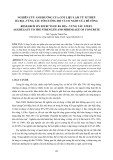
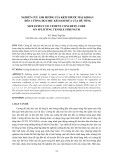
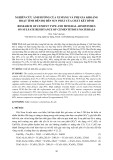
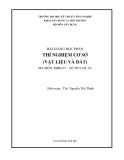



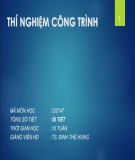

![Bài giảng Quản lý vận hành và bảo trì công trình xây dựng [chuẩn nhất]](https://cdn.tailieu.vn/images/document/thumbnail/2025/20251006/agonars97/135x160/30881759736164.jpg)


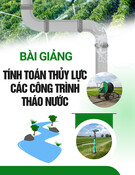
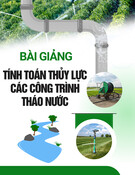
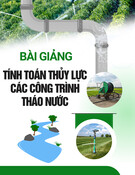
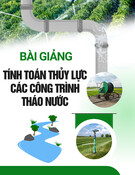
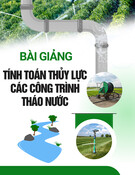
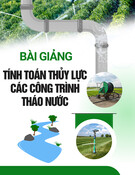

![Ngân hàng câu hỏi trắc nghiệm Sức bền vật liệu 1: [Mô tả/Định tính Thêm để Tăng CTR]](https://cdn.tailieu.vn/images/document/thumbnail/2025/20250920/kimphuong1001/135x160/6851758357416.jpg)


![Trắc nghiệm Kinh tế xây dựng [chuẩn nhất]](https://cdn.tailieu.vn/images/document/thumbnail/2025/20250920/kimphuong1001/135x160/32781758338877.jpg)
